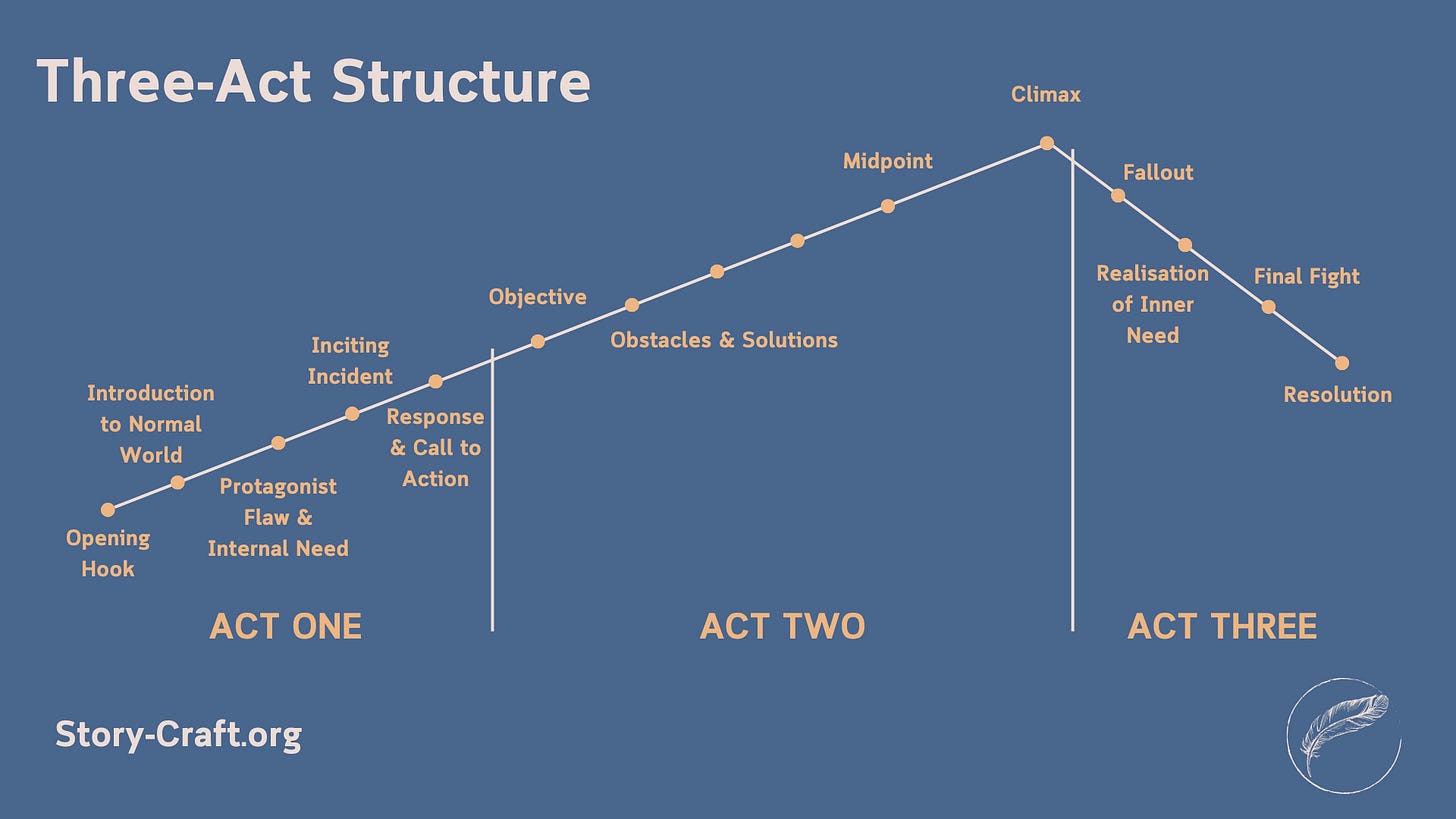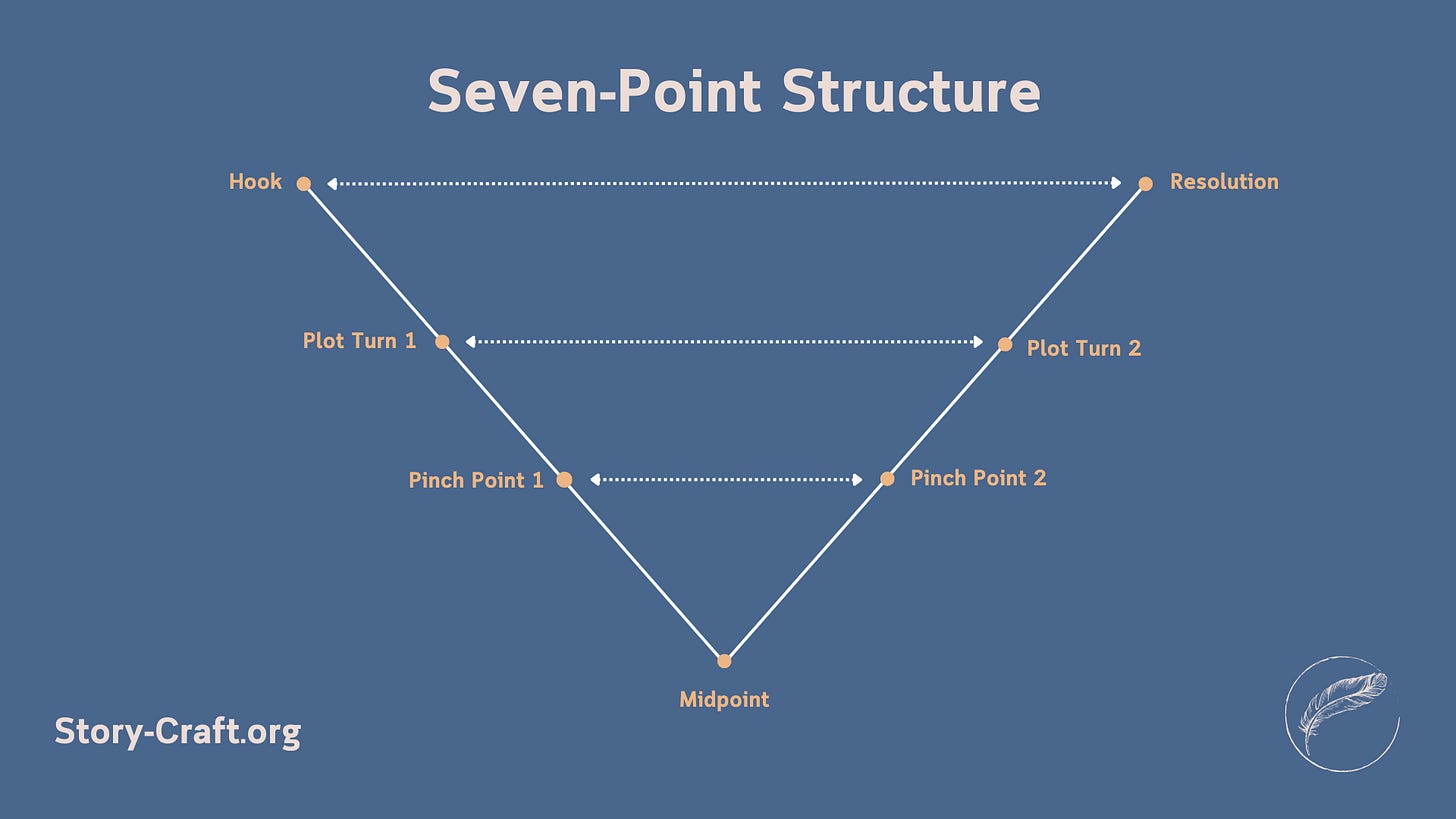StoryCraft Novel Challenge Day 8: Let’s talk about structure, baby! The Hero’s Journey, Three-Act Structure, and Seven-Point Structure Overview
There are multiple reasons understanding structure is important for writers. The first is obviously to develop your craft and your stories, but as we eventually move on to the more collaborative parts of the publishing process, knowing StoryCraft will help you be able to have deeper conversations about your book.
If an editor were to ask you about the Belly of the Whale in your book, would you be able to answer the question? What about your All is Lost moment?
There are so many forms of structure, and every one of them is great to learn and understand, but we’re going to focus on three main structures to make sure we have the best foundation for StoryCraft going into this novel. Remember, we’re not forming to only one, but instead, figuring out what speaks to us from each of them and creating our own version.
The first main structure is The Hero’s Journey. This is considered one of the first looks at overall story structure and was developed by Joseph Campbell after he studied many existing myths and folk stories. He found a common journey that he separated into three distinct acts.
The Hero’s Journey works as a great foundation for adventure stories, epics, and anything involving a single protagonist who must overcome a great obstacle.
If you’re looking to learn more about any of these structures, you can check out our foundational online course, StoryCraft: Writing Your Novel. It’s currently in Beta, and you can save $150 with SCBETA.
Three-Act Structure is common in screenwriting, and was born from The Hero’s Journey. It’s a tight way to develop a story where a flawed Protagonist must overcome obstacles and eventually realize their inner need.
Seven-Point Structure is a simple structure that builds out from the largest moments of your story. You start with your Hook, Resolution and Midpoint. Then, you add in your Plot Points to complicate the story. Lastly, the Pinch Points are added to create additional conflict and boost the stakes.
We’re going to complete a Beatsheet later on in the challenge using a deeper form of structure, but for now, start thinking about what kind of story you want to tell and what the emotional journey of your protagonist(s) might be. Will you have one protagonist? Dual/Multi? What does the journey feel like, and which elements can you draw from these main structures?
Use the hashtag #StoryCraftNovelChallenge to share your progress and connect with other writers!
Happy Writing,
Jess and Theo




